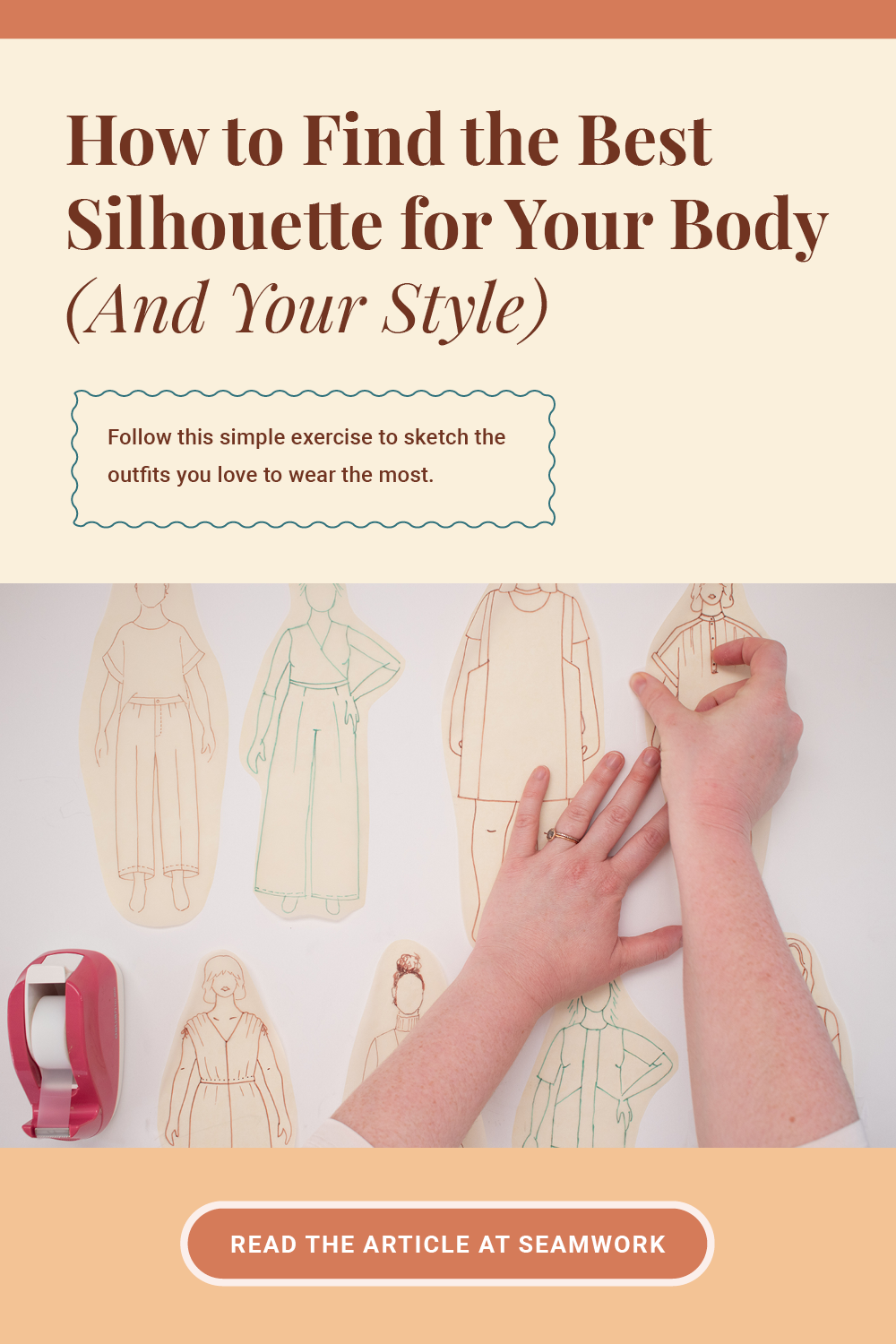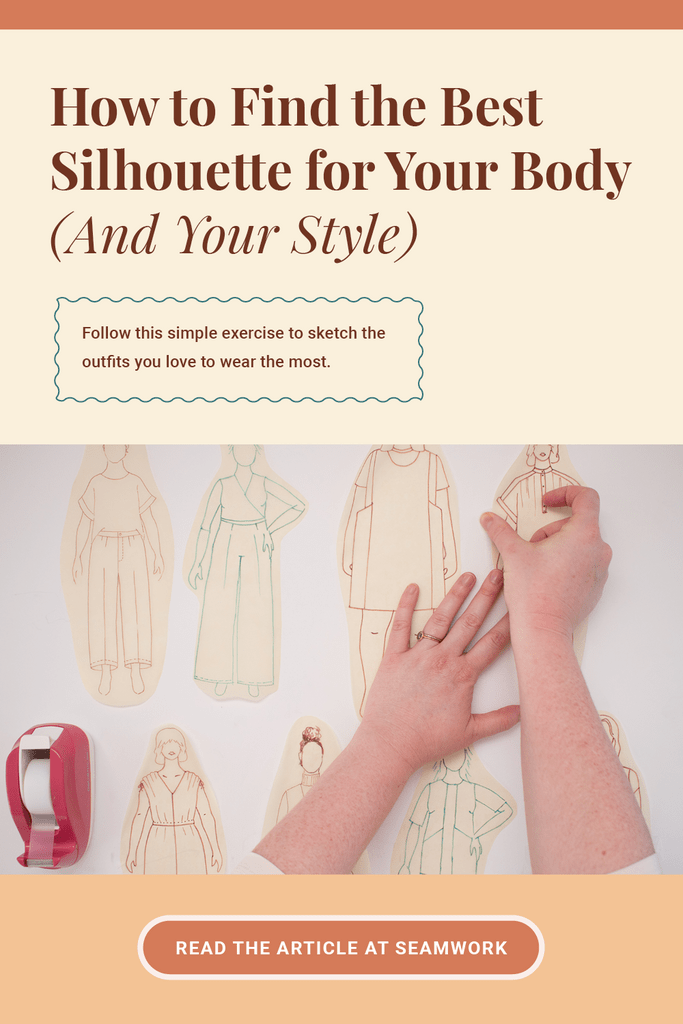What do you type into Google when you want to find clothes that look and feel good on your body? Even more puzzling, what results will you get from your search? Some of the words you’ll see at a glance are fruity—body types described as strawberries, apples, and pears. Others words are geometric, like triangles and hourglasses. Then there is the 1940s futuristic-sounding trio that aims to categorize body shapes as ectomorph, mesomorph, or endomorph.
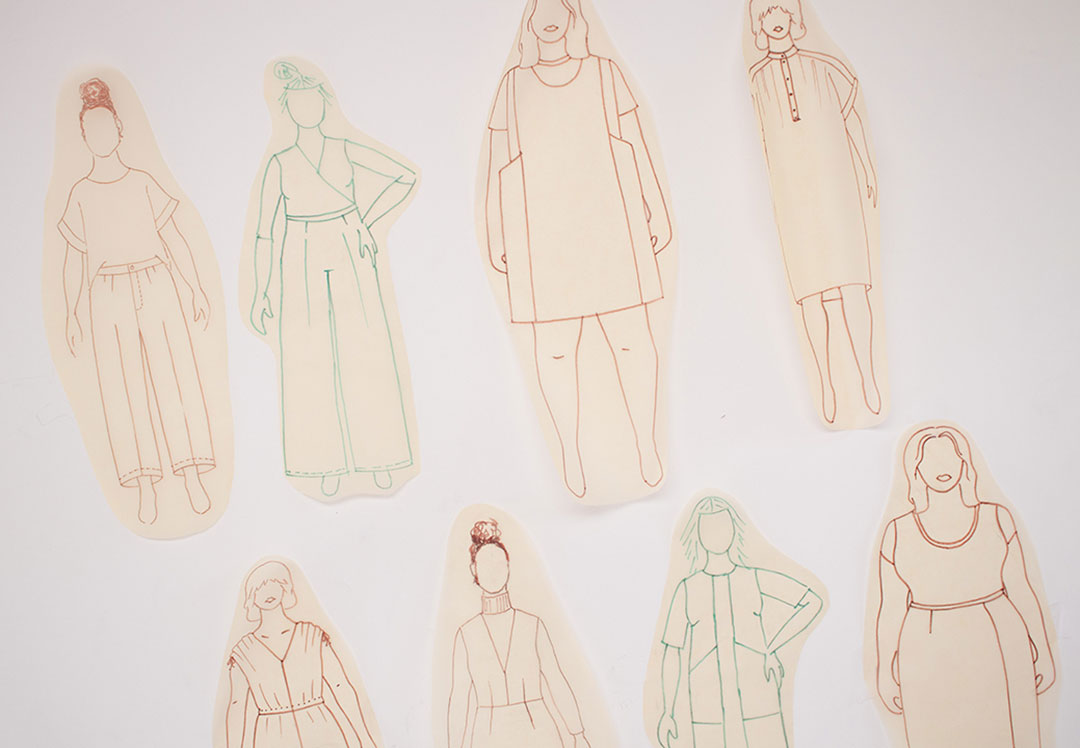
When we look in the mirror, we often hone in on what makes us feel self-conscious instead of what makes us feel good. If you research the best clothes for your body type, you’ll often be given tricks for how to hide or highlight certain parts of your body. If you are comfortable with that—great! There are so many resources out there. The ultimate goal is to feel good in what you’re wearing. That’s it.
So if you struggle when looking for clothes that fit your body’s shape and your personal style, we have a more body-neutral approach. Afterall, how do you pick an identity for your body—this fleshy, three-dimensional figure that you call home? And once you do that, how do you find the clothes you love to wear the most?
In this article, we’ll present a simple, basic approach to experimenting with different silhouettes to see what feels best on your body and highlights the style you want to show off to the world. You know how to sew clothes, which means you have so much more control over this than if you only bought clothes in a store. So grab a pencil, and let’s get started.
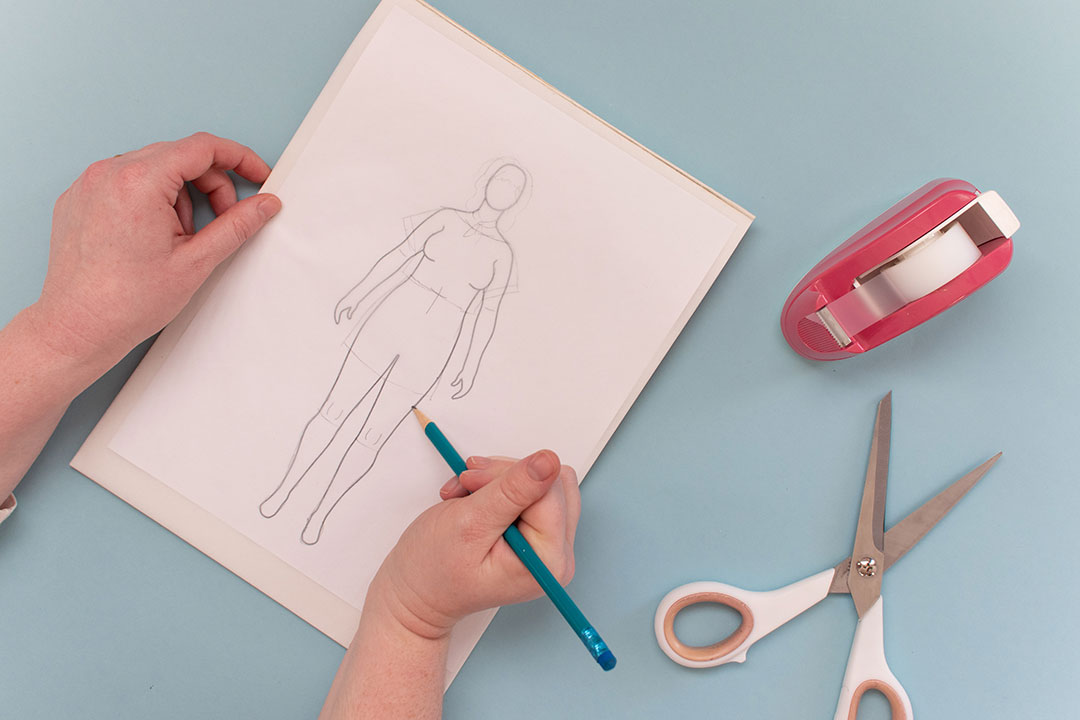
Some Current (and Past) Body Shape Theories
Before we sketch some outfits, we’ll start with an overview of current (and past) body shape theories. If someone tells you that you should or shouldn’t wear something, take it with a grain of salt. Personal style is just that—personal. We can’t all possibly fit into a few categories, and that’s a beautiful thing.
You have total power to reject any of these body-type theories or adjust the phrasing. Remember the ultimate goal—to feel good in your clothes—and try not to get too distracted by nomenclature. Pick words that make you feel excited to design clothes, not necessarily words that force you to identify with a piece of food.
Somatotypes
If you go back to the 1940s, a doctor named Willian H. Sheldon argued that our skeletons, fat, and muscle could be categorized into three body compositions that he called somatotypes. You might find these terms on fitness blogs rather than fashion blogs, but it’s good to know the history, right? Briefly, he categorizes ectomorphs as having less body fat and muscle, endomorphs as having more body fat and muscle, and he describes mesomorphs as athletic.
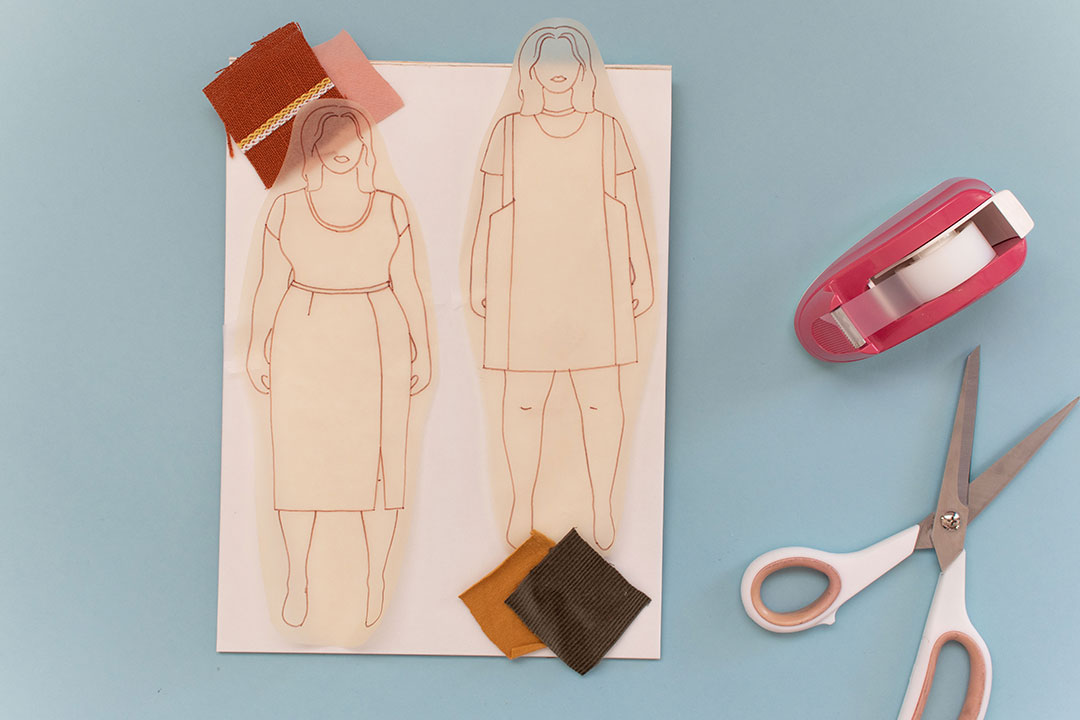
Shapes, Fruits, and Veggies
It’s hard to trace the origin of many of these descriptors for our body types, so let's just blame all the archives of fashion magazines. If you want to explore these, you can easily find online quizzes to see if your body resembles fruits, like apples or pears—or even veggies like carrots, potatoes, or celery. Alongside the food categories, you’ll find shapes, like triangles, rectangles, diamonds, and hourglasses. If you find some of these categories helpful, then use them.
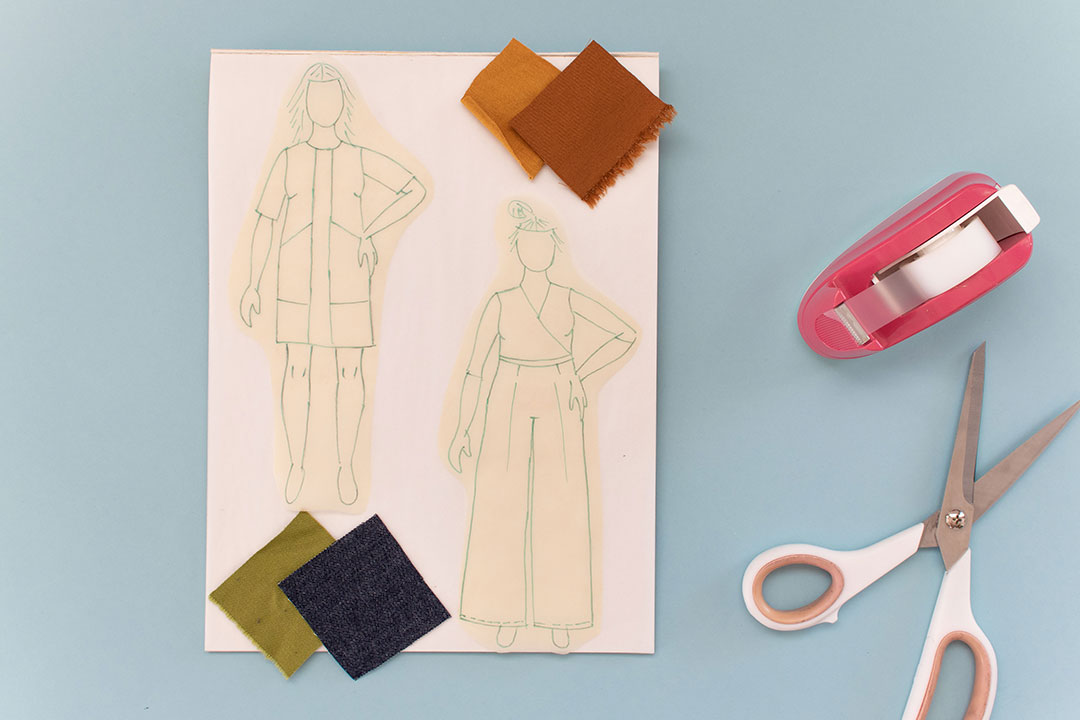
Body Archetypes and Style Essences
There are two more figures in body-shape history, John Kitchener and David Kibbe. If you’re lucky enough to get your hands on a copy of David Kibbe’s book Metamorphosis, A Personal Image And Style Book For Women—it’s out of print and selling to the highest bidders—you can read all about his system of 13 style archetypes. It’s organized by five archetypes and five archetype combinations. These archetypes are rooted in a holistic approach to your body’s lines. He uses the terms Dramatics, Classics, Naturals, Romantics, and Gamines. You can get really deep into analyzing yourself and others by pairing the basic archetypes with descriptive words like soft, flamboyant, and theatrical—so in the end, you can identify with one of the 13 style archetypes.
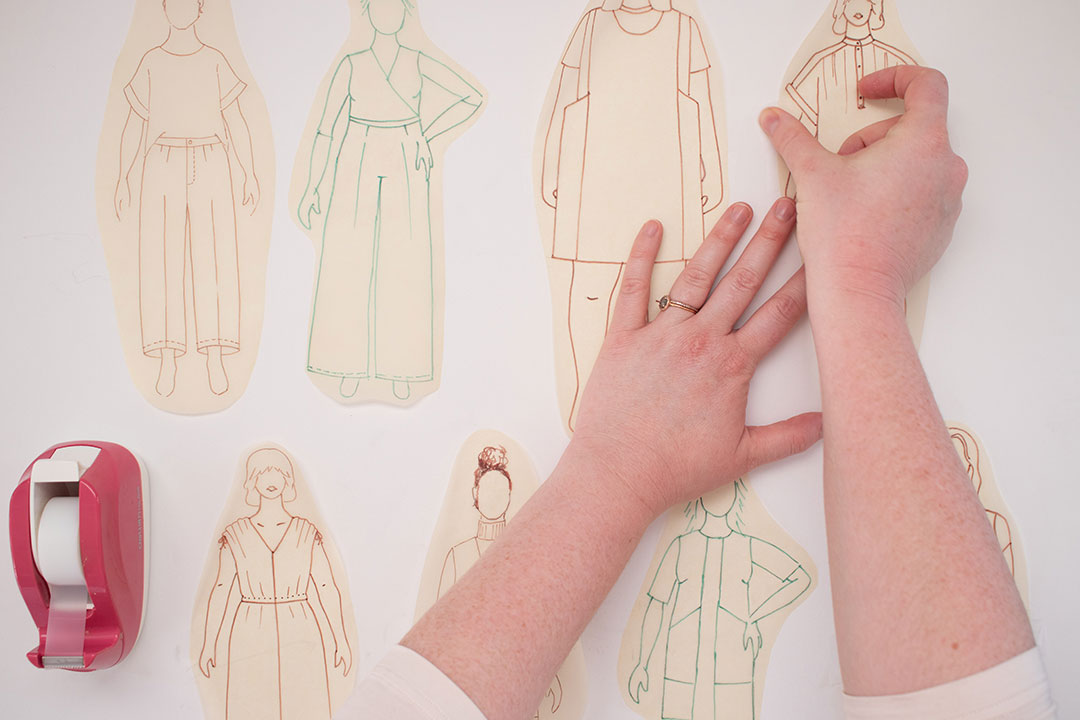
John Kitchener’s approach includes the same archetypes as Kibbe and adds Angelic and Youthful. They both consider your energy and personality in addition to your physicality, like your bone structure and facial features. Since Kibbe’s book is from the 1980s, it relies heavily on traditional masculine and feminine concepts and a yin-and-yang framework of opposites.
Find Silhouettes You Love to Wear
A few members of the Seamwork team volunteered to do this exercise to get you inspired. We worked with the Kibbe method, but it’s very time-consuming, and if you have body issues, it can be tough to make it through the whole thing. So, we decided to use three descriptors to put ideas on paper and get to sketching. You can come up with your own words and descriptors! If you find some words that resonated with you and made you feel confident, share them in the community.
Step 01: Describe your body's shape
If you don’t want to research different body-type theories, here is a basic, body-neutral approach that you can use. First, look at yourself in a mirror or ask a friend and answer these three questions.
-
How do you present with regard to height? For example, would you describe yourself as petite, moderate, or long? This may not have to do with your actual height, as it is possible to appear shorter or taller than you are. -
How would you describe your curves? Some words you might choose are full curves, soft curves, angular curves, or straight. -
Do you have any dominant traits, or does your overall body shape appear balanced? For example, do you have broad shoulders, wide hips, or narrow limbs? Now is the time to note any parts of your body that might require some special consideration when choosing patterns.
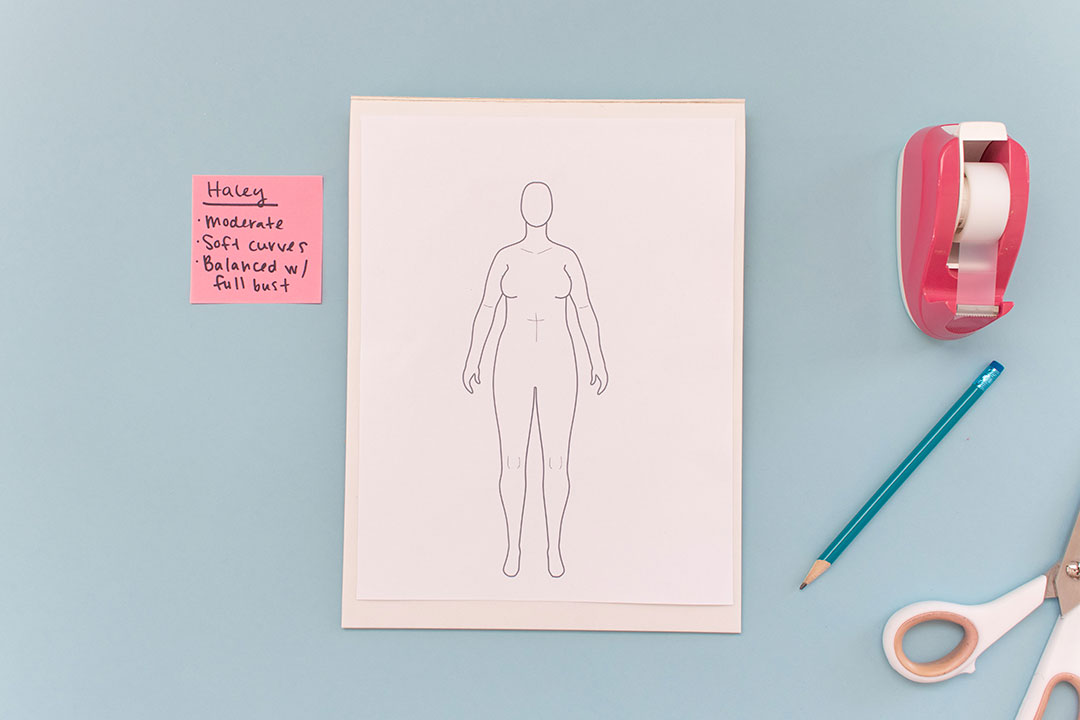
Looking at Haley, she presents as having moderate height with balanced, soft curves, and her dominant trait is that she has a full bust.
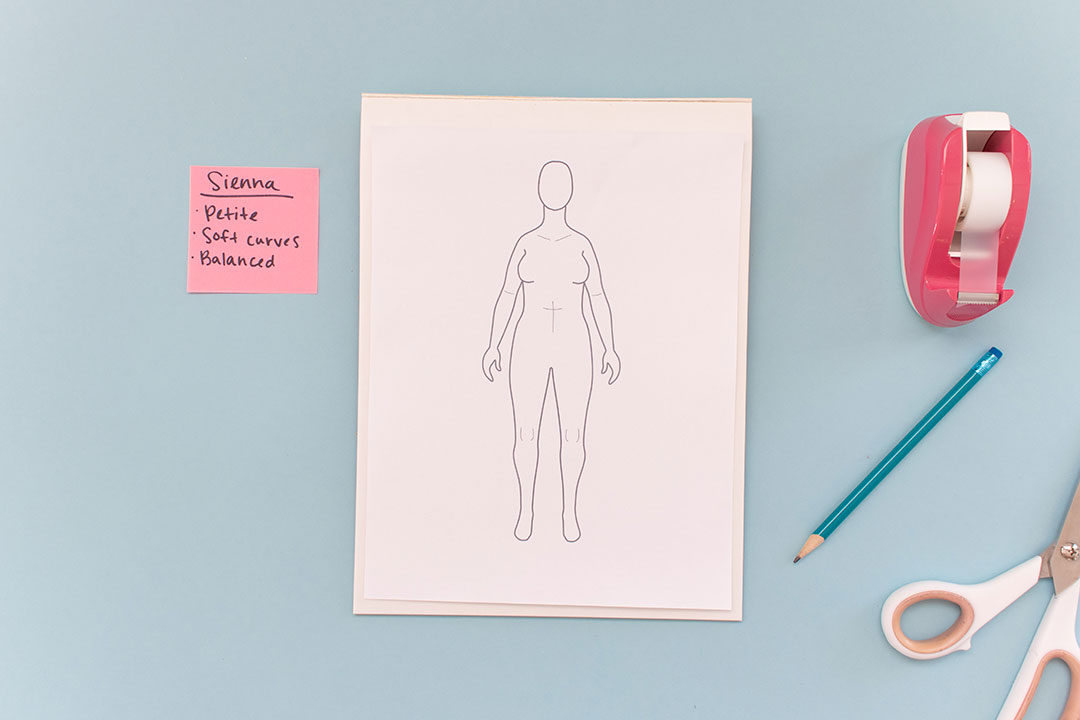
Looking at Sienna (who is actually the same height as Haley), she presents as petite with balanced, soft curves.
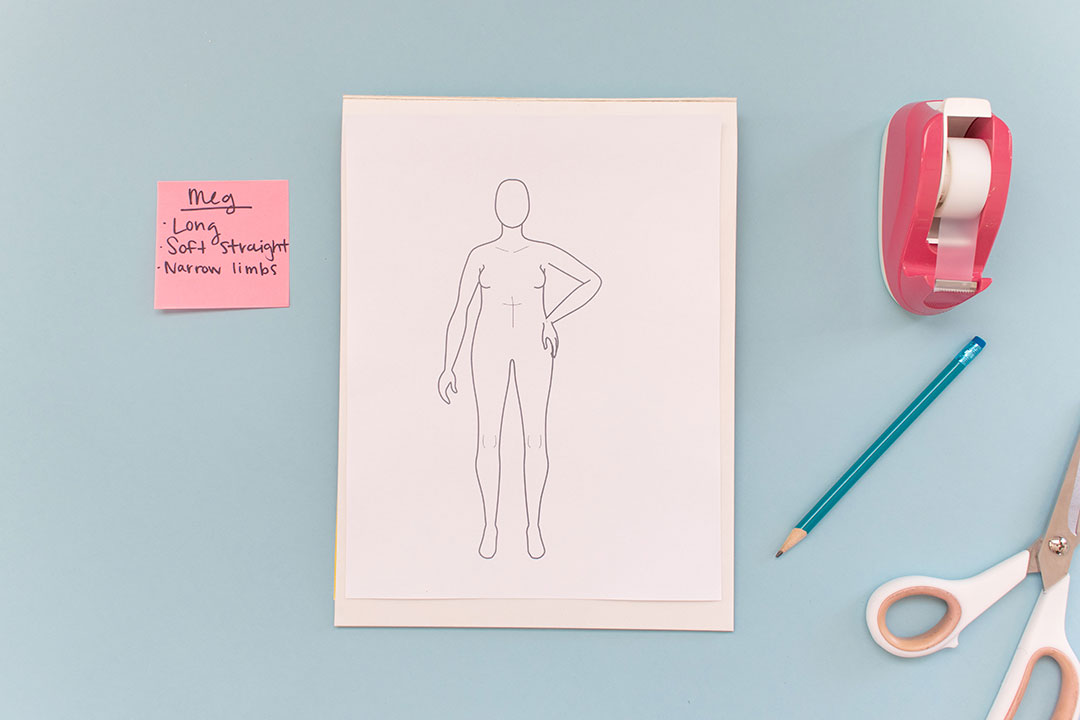
Looking at Meg, she presents as long with straight curves, and her dominant trait is narrow limbs.
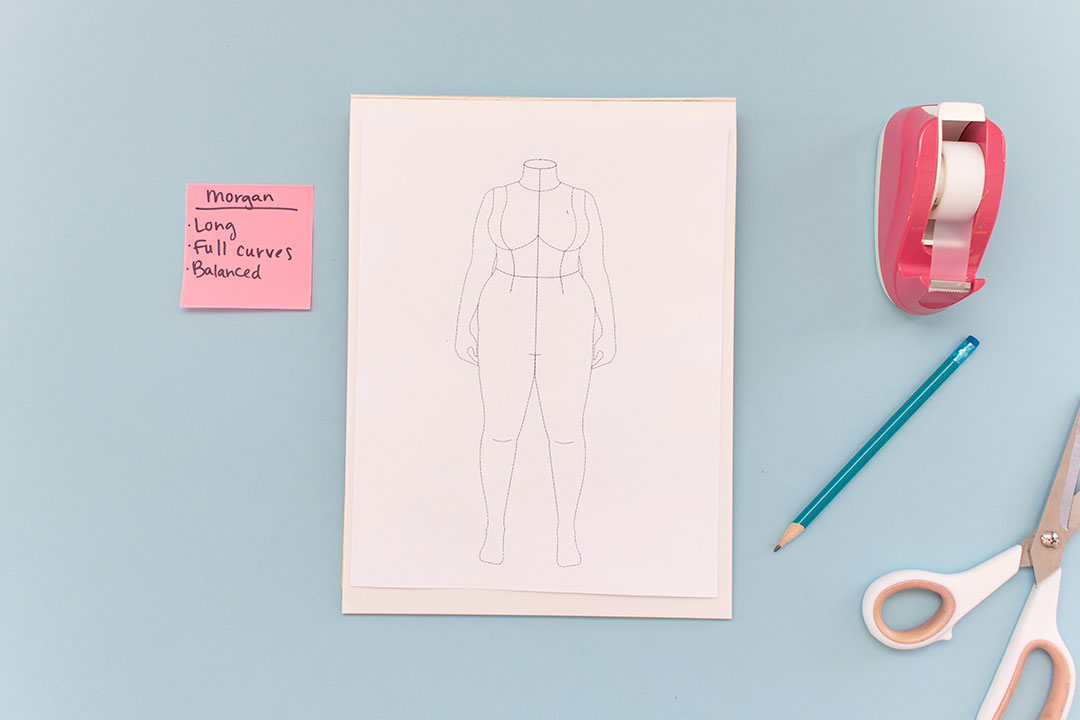
Looking at Morgan, she presents as long with balanced, full curves. Morgan is one of our fit models, so she actually has a custom croquis that we made for her to fit Seamwork patterns!
Step 02: Describe your desired effect
The biggest trap of body-type theories is the list of things you should and should not wear, but how can you keep track of all the rules? And what if you want to wear some of those things?
Here’s a better way to frame this: Do you want to dress in harmony with your body shape or in opposition? Both are awesome choices. Dressing in opposition doesn't mean you are wearing shapes you "shouldn't" wear. Instead, it is a great way to make a statement, embrace trends, and show off your unique dominant traits. Dressing in harmony or opposition also highlights a simple way to work with popular body-type theories like the Kibbe method.
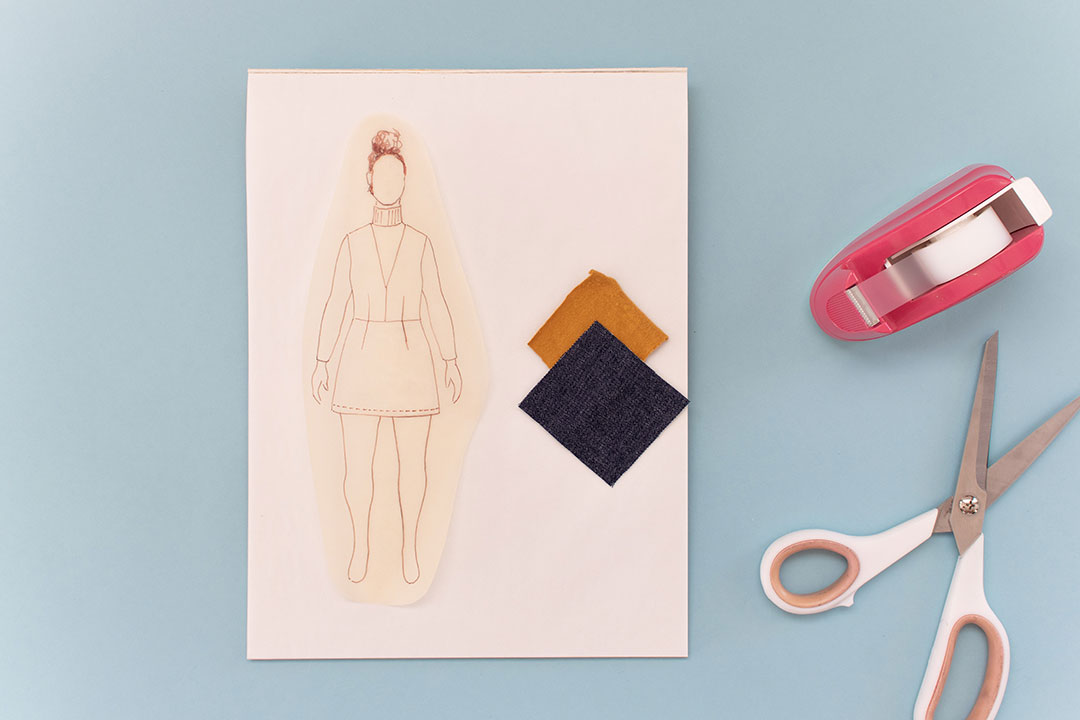
To do this, you have to discover the kinds of silhouettes that complement your body's shape and the kinds of silhouettes that oppose your body's shape. This is where examples are most helpful, so you can see that it’s not science, but a fun part of sewing your own clothes. Here are some generalizations that might work for you
If you present as petite, shorter cuts tend to be in harmony, and longer cuts would be in opposition. If you’re moderate, play with where individual garments bisect your top and bottom halves to see what looks in harmony or opposition. Depending on your curves, if you present as long, you can often choose between short or long cuts.
If you have soft or full curves, adding definition at the waist or neckline can work in harmony with your shape. Garments that add width or volume or have straight, angular cuts will oppose. If you’re straight, you can experiment with volume and angular or straight-cuts to work in harmony. Add definition at the waist to work in opposition.

As for dominant traits, this is where we are all a little different—and where we can have the most fun playing with harmony and opposition. For example, if you have broad shoulders, you can wear fitted shoulders to highlight your shape, or you can work in opposition by exaggerating your trait with angular cuts (or shoulder pads!). If you have a full bust, you can wear curved necklines to work in harmony or high necklines to work in opposition.
To learn about what makes you feel the most confident about your dominant traits, look no further than your closet! Consult the garments you love to wear. How do they work in harmony or in opposition with your dominant traits? If you have a garment that makes you feel insecure, try to pinpoint why and experiment to create the opposite effect.
Step 03: Pick three features to create that desired effect—and sketch
Once you have described your body’s shape and you know the desired effect you want to have with your silhouette, it’s time to sketch. Pick three features that will help you create your desired effect. You can jot these down on post-its or a piece of paper. In these examples, see the features in harmony and opposition for Haley, Sienna, Meg, and Morgan.

Remember, Haley presents as having moderate height; she has soft, balanced curves and a full bust. If Haley wants to dress in harmony with her body shape, she could look for a soft drape, curved lines, and waist definition. She could wear flowy fabrics.
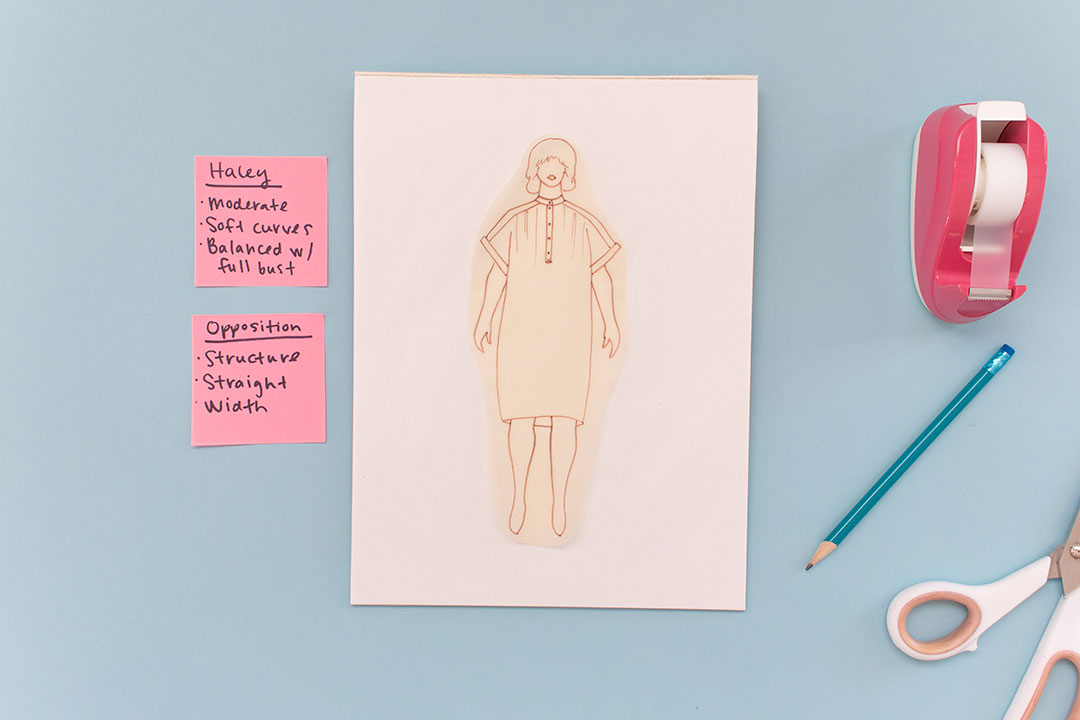
If Haley wants to dress in opposition to her body shape, she could look for straight cuts or garments that add width overall. She could also wear structured, heavy fabrics.

Sienna presents as petite with balanced, soft curves. If Sienna wanted to dress in harmony with her body shape, she could look for shorter cuts, waist definition, and curved lines. She could wear drapey fabrics.

If Sienna wanted to dress in opposition to her body shape, she could wear longer cuts and straight, boxy shapes. She could wear heavy or structured fabrics.

Meg presents as long with straight curves, and her dominant trait is narrow limbs. So if Meg wants to dress in harmony with her body shape, she could look for longer, semi-fitted, or straight cuts, moderate structure, and angular lines. Presenting as long, she can play with length and volume to see what appears in harmony.
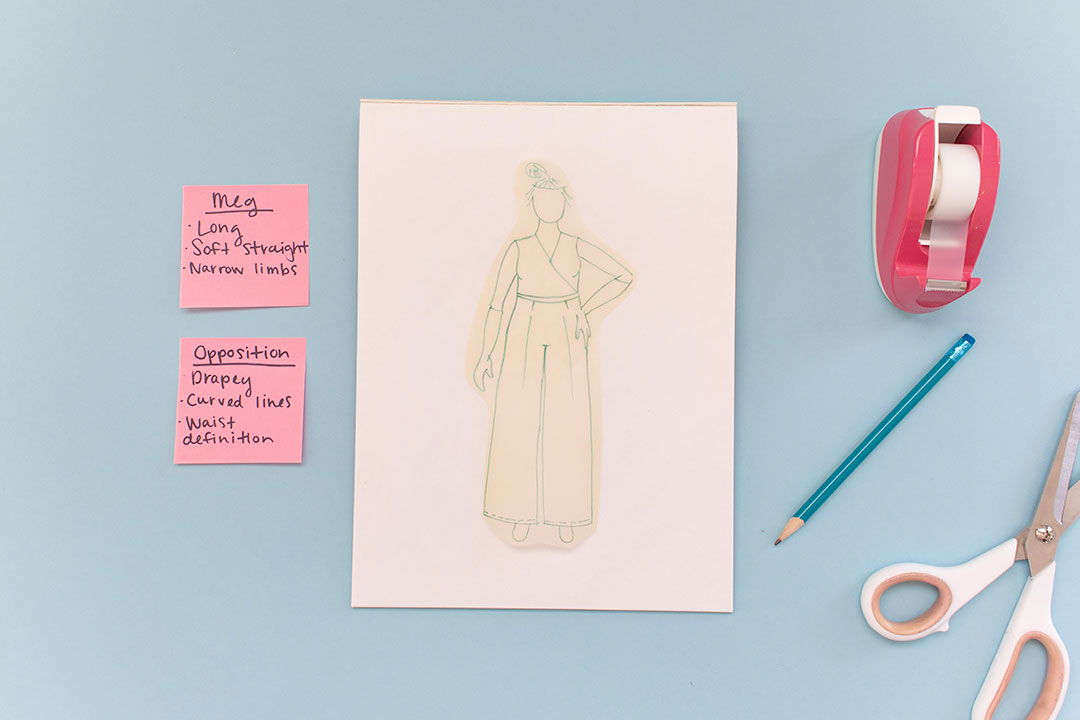
If Meg wants to dress in opposition to her body shape, she could look for curved cuts and waist definition. She could wear very structured or very drapey fabrics.
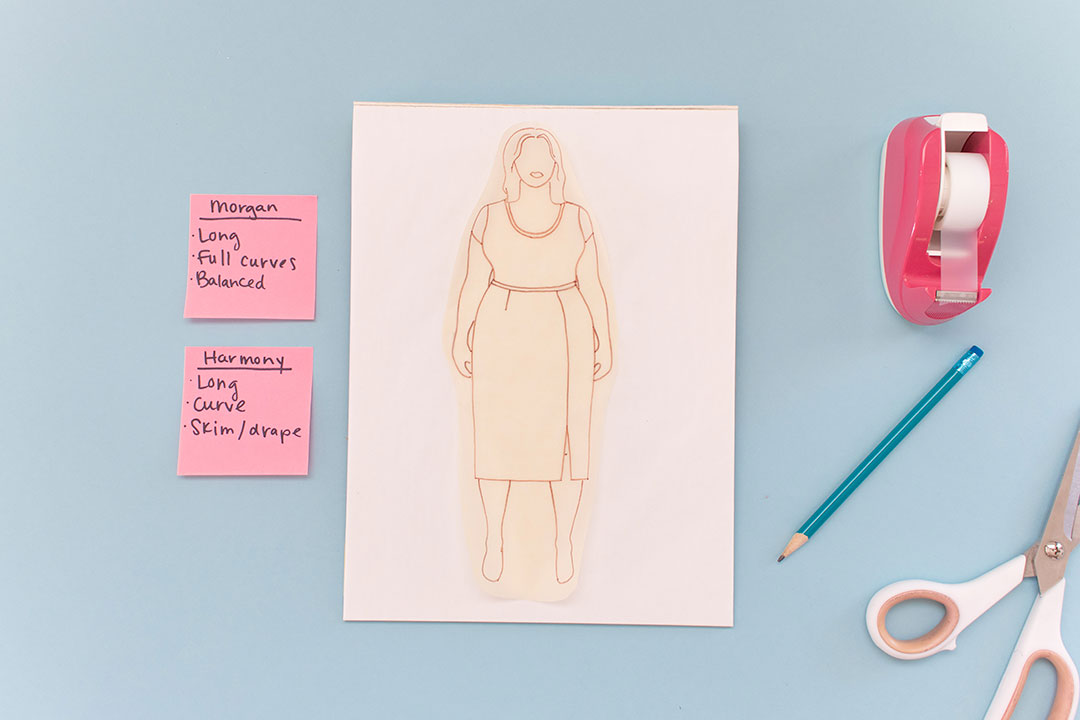
Morgan presents as long with balanced, full curves, so if she wants to dress in harmony, she could look for long, curved style lines. She could wear fabrics that skim and drape on her body.

If Morgan wanted to dress in opposition to her body shape, she could look for short, angular cuts and wear heavy, structured fabric.
Step 04: Do these silhouettes feel good?

Once you have some sketches or once you have tried on a few outfits, how do you feel? Do the style lines emphasize the silhouette? Do you need to change any style lines to get a different effect? Do you want to change any details, like the length or volume?

Since you know how to sew, you can change virtually any part of the garment, from where the hem hits to the fabric choice.

You know you did it right when you reach for the garment, put it on, and feel great. But, if you put it on and then change before you leave the house, try again.

With this simple approach to describing your body’s shape and experimenting with silhouettes that work in harmony or in opposition, you have control of both the fit and the style. So don't settle for clothes that don’t make you feel great!
Love the article? Pin it for later.
